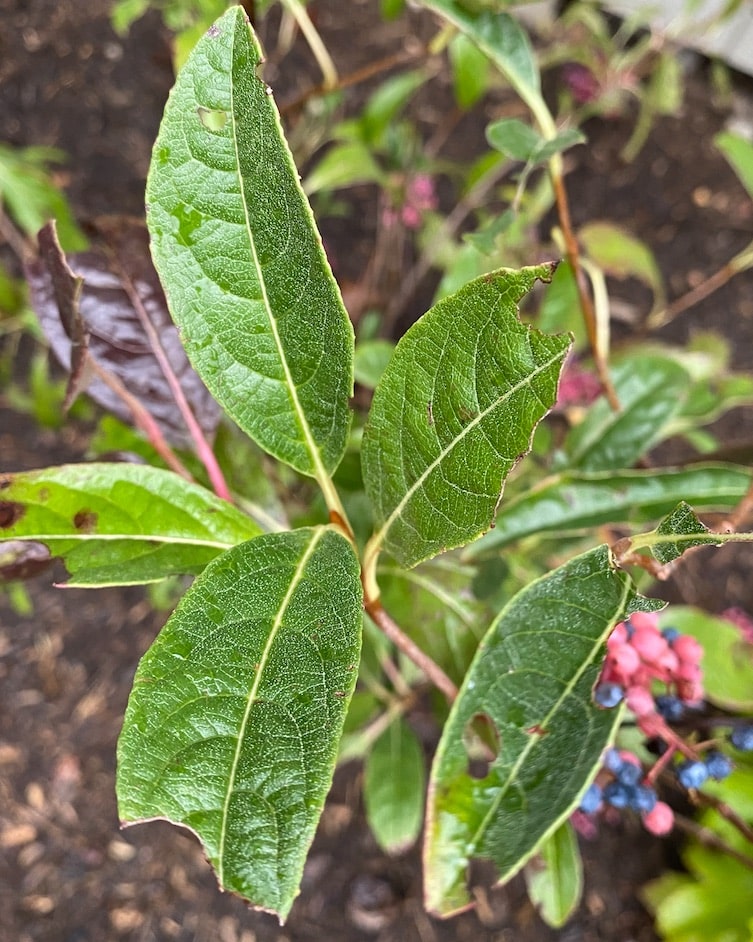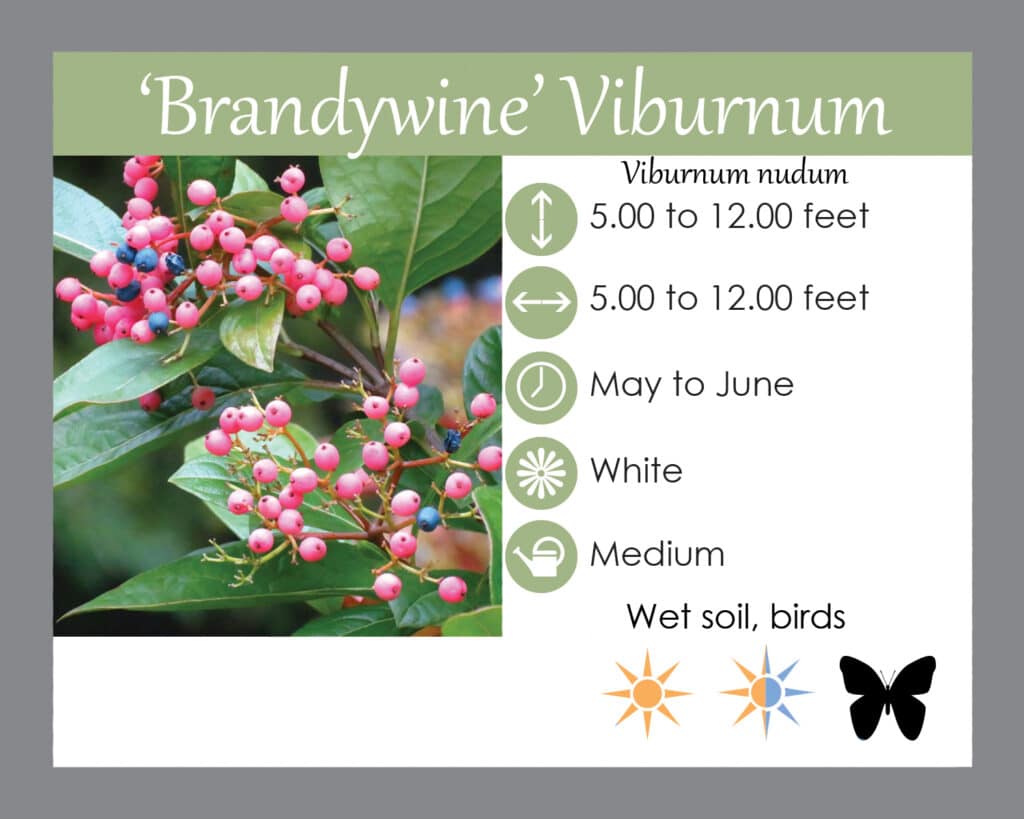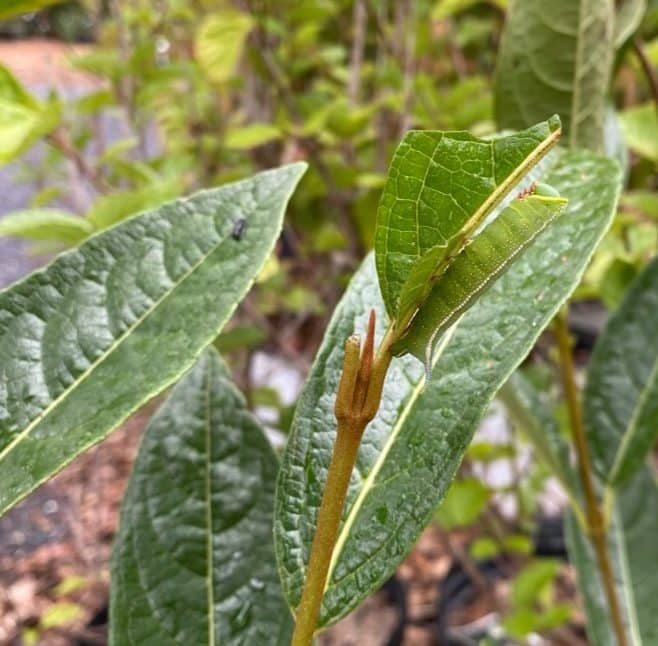Maryland Multi-Season Interest Native Plants
Viburnum nudum
Viburnum nudum is a rounded, multi-stemmed, upright-spreading shrub that supports your local wildlife and looks good while doing it! In spring it has aromatic white flowers and glossy dark green leaves. Summer brings pink berries appear that eventually ripen to blue and purple shades. For best berry production viburnums need cross pollination so we recommend planting in groups. In Fall the foliage will start turning maroon and dark purple before dropping. This shrub does great on the edges of rain gardens, hedges along roadsides, and foundations. Viburnums are also great pollinator host plants. This one at our nursery has a Hummingbird Clearwing caterpillar munching away!
LGS Notes:
Brandywine viburnum is a shrub I use in ‘living borders’ where you would like to create privacy without creating a hedge of all of the same plants in a row. I like to mix it with Myrica pennsylvanica, Clethra alnifolia, Rhododendron catawbiense and Prunus ‘Schip’ (non native). I also use Brandywine viburnum as a focus plant for some height at the corners of foundation beds. The berries are lovely and really put on a show. ~Lauren
I love the texture of the foliage that the Brandywine viburnum has, a lovely contrast against the color popping berries. This is a great option for a low maintenance shrub that provides beauty throughout multiple seasons. ~Chrissie



